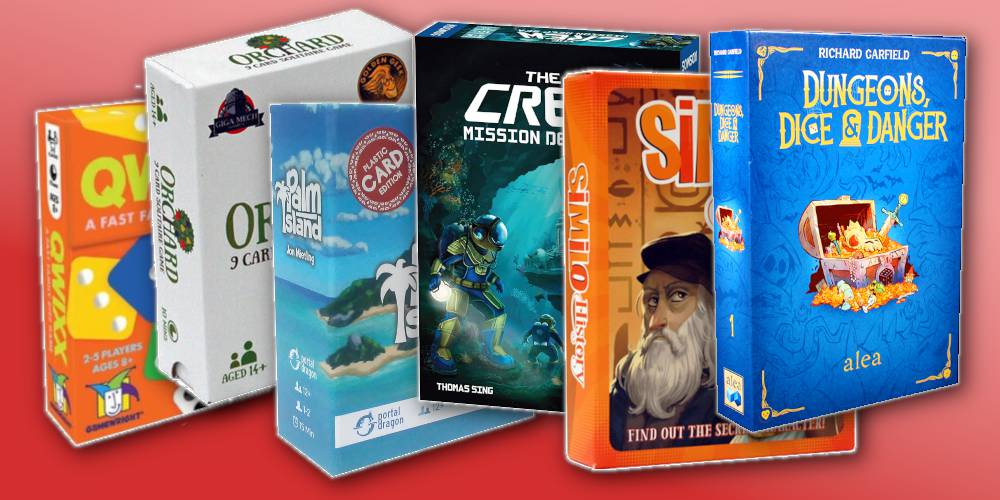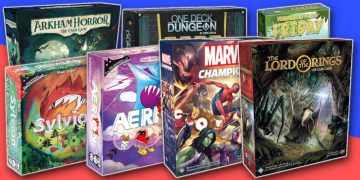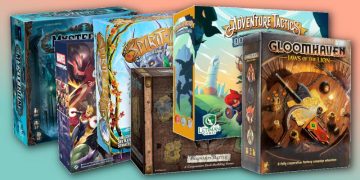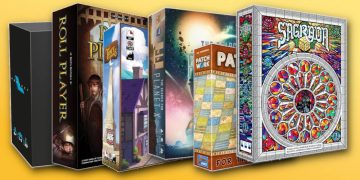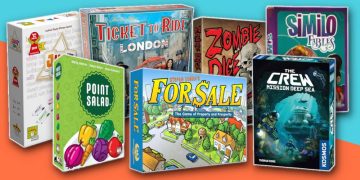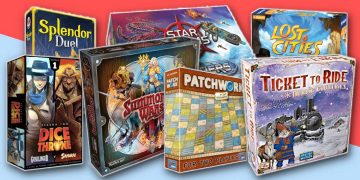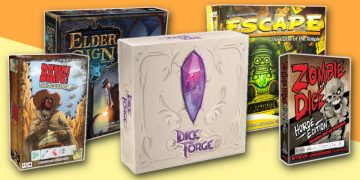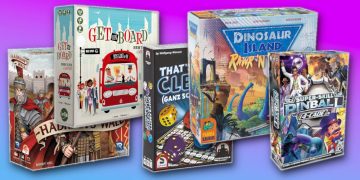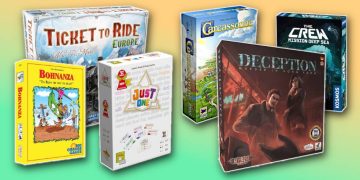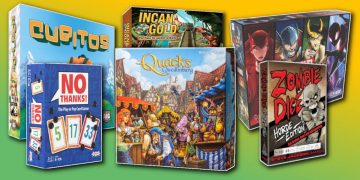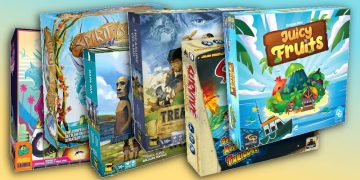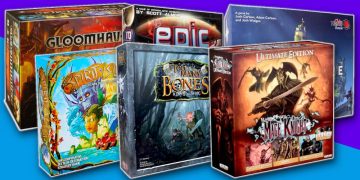When you're stuck in a plane, train, or even the backseat of a car, you need a way to kill time... and board games are great for that!
Of course, mobile games are more convenient—unless you're like me and prone to motion sickness. Plus, these days I much prefer the tactile experience of cards and pieces, and we could all stand to spend less time staring at digital screens.
So, I think everyone should have at least one portable board game or card game that they can take with them while traveling!
What makes a great travel board game?
- Small box. When you're traveling, space is at a premium. Carrying the game around shouldn't be a nuisance and it should fit comfortably inside a carry-on bag. If the entire game can fit inside your pocket, that's as good as it gets!
- Minimal footprint. It can't take up too much table space. (Ideally, no table space at all!) Plus, it should have very few components. Not only are game pieces hard to handle while traveling, they're easy to accidentally bump off and lose forever.
- Length and replayability. Whether your flight is 1 hour or 12 hours, the game should keep you engaged and help make time fly by. But it should also be under an hour per game so you aren't forced to cut it short if it happens to run too long.
Here are my picks for the best travel board games that are tiny, portable, and able to be played pretty much anywhere!
Note: You'll notice a distinct lack of Button Shy games on this list. While Button Shy games are famously tiny—each game is only 18 cards—they tend to take up a lot of table space. I've yet to find one that can comfortably play on an airplane tray.
13. The Mind
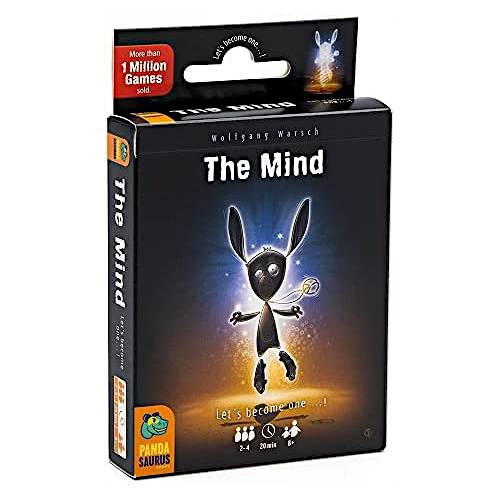
The Mind is a cooperative card game where everyone has their own hand of cards—from a deck numbered 1 through 100—and the goal is to play all cards in ascending order... without ANY communication.
With larger starting hands, the game gets more difficult. You start on Level 1 with one card each, then Level 2 with two cards each, up to whatever Level you can reach. Or you can just play (and replay) it on whatever Level you want to see how often you can win.
The Mind is a great card game for planes because it's mainly held in your hands (all cards played to a single pile) and the no-communication rule is a good fit when you're stuck in a loud plane with others around you.
12. Grove
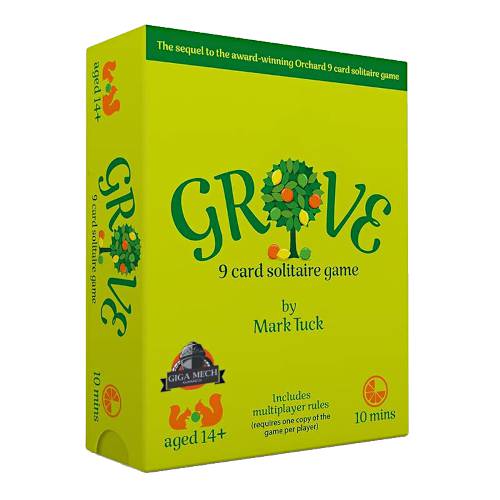
Grove is a brilliant solo puzzle-style card game that only consists of 18 cards and 15 dice that are used as point trackers.
The cards are basically tiles, which you place by overlapping previously played cards. When you overlap trees of the same color, you increase the value of those trees (which are tracked using the dice).
How bountiful will your grove be? Grove is a beat-your-own-score type game with a lot of replayability. The backs of each card have different victory conditions for variety.
Each game of Grove is relatively short but punchy, and it's a fantastic game to play while traveling.
11. Timeline
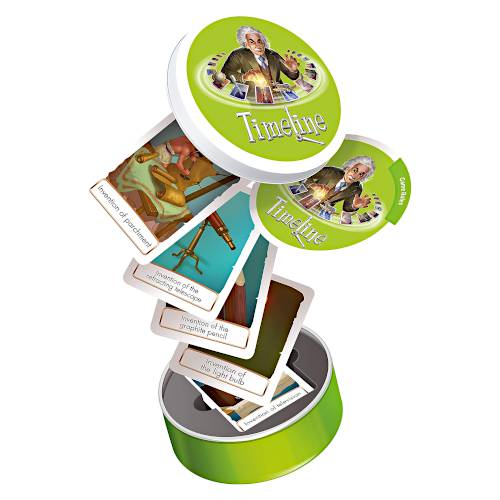
Timeline is a compact card game about figuring out where different events belong on a timeline.
Players have a hand of cards that each depict a specific event. Cards are played to a shared timeline and on each turn you have to place one card into the timeline. If it's not placed correctly, you draw another card. Otherwise, first to get rid of their cards wins!
Timeline is less about knowing the exact years when things happened and more about logically reasoning when things happened in relation to events already in the timeline. It's fun even if you know zero history!
Note: Timeline comes in several themed packs, which can be mixed and matched for more variety and difficulty. In addition to Timeline Inventions, there's also:
10. Similo
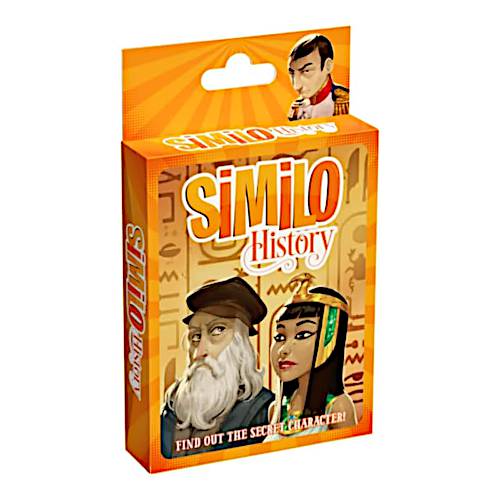
Designed by Martino Chiacchiera, Hjalmar Hach, and Pierluca Zizzi
Supports 2 to 8 players
About 5 to 15 minutes
Similo is a deduction game where one player is trying to get everyone else to guess the right character from a grid of twelve.
On each turn, the active player plays a card and marks it as either SIMILAR or DIFFERENT. Based on that, the other players have to eliminate characters from the grid. If the correct character remains at the end, everyone shares victory!
Similo is like a better, more compact, and more fun Guess Who. The grid is randomized every time so there's replayability, plus the discussions that arise during elimination can be surprisingly funny.
Note: Similo comes in several themed packs, which can be mixed and matched for more variety and difficulty. In addition to Similo History, there's also:
9. Hive Pocket
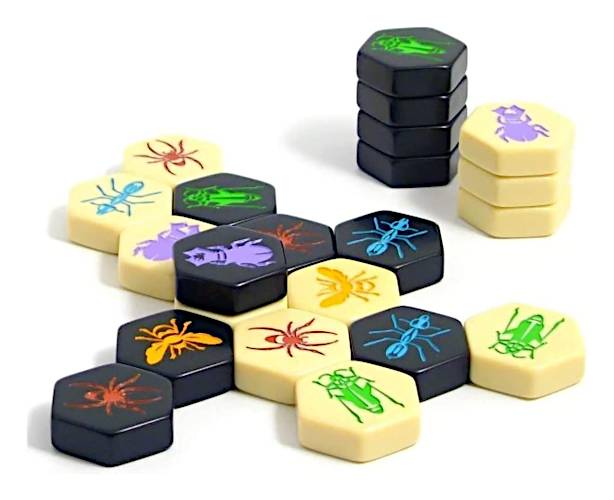
Hive is one of the best head-to-head two-player board games if you want a pure abstract strategy game—and Hive Pocket is the portable travel edition that you can take anywhere.
There's no board in Hive; the pieces ARE the board! As you place pieces and move them around, they dictate where future pieces can be placed and moved to. Each insect type has its own rules for how to move.
Hive Pocket has a tiny footprint and the tiles are made of durable plastic resin that's satisfying to play with. Moreover, Hive Pocket comes with two expansion insects already included!
8. Scout
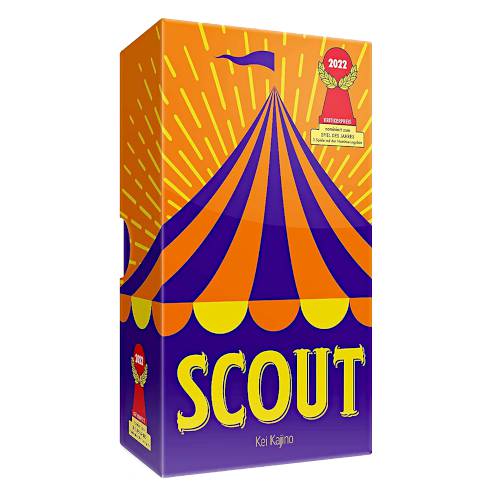
Scout is a ladder-climbing card-shedding game in the style of Crazy Eights or Chinese Poker, but it has a few twists that take it to the next level and make it one of the best in the genre.
First, you can't re-order your hand once it's dealt. Second, when you play cards, you collect the cards played by the previous player. Third, if you can't play any cards, you "scout" by taking a card from the previous player and adding it to your hand—and they earn a point.
When someone empties their hand, the round ends. Each player scores a point for each card they collected plus any scout points they earned.
Scout is a simple but deep card game that feels like an old-school card game but plays like a modern classic. It's the perfect travel card game for families who want something a little meatier.
7. The Crew: Mission Deep Sea
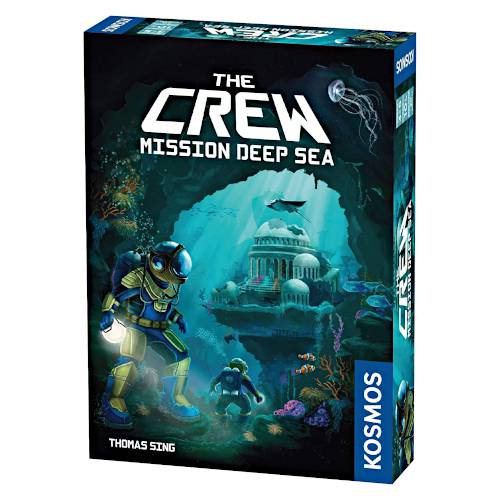
The Crew: Mission Deep Sea is a cooperative trick-taking card game—a lot like Euchre or Hearts, except everyone is trying to accomplish certain tasks and helping others to achieve their tasks.
Examples of tasks in this game: "Win exactly 2 Blue cards" or "Win only the last trick" or "Win at least 1 card of each color." There are nearly 100 task cards and a random set is chosen every game.
The hard part is, there's no communication allowed! Except using the one-time communication token. With that token, you can reveal one card and mark it as either your HIGHEST of that color, your LOWEST of that color, or your ONLY card of that color.
Trick-taking card games have been a staple of societies for centuries, but the cooperative twist in The Crew: Mission Deep Sea makes it one of the best of its kind. It's so addictive!
6. Zombie Dice: Horde Edition
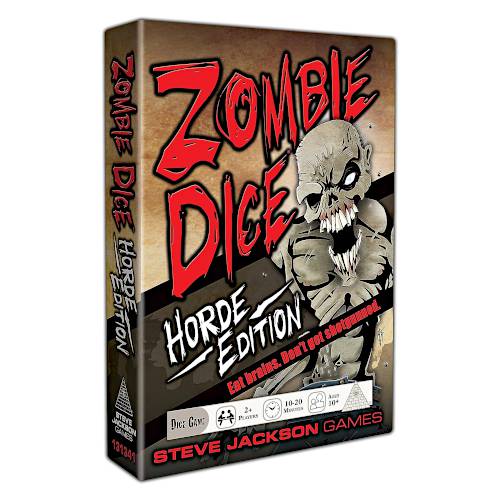
Want to play a travel board game that's literally nothing but a set of 13 custom dice? Then Zombie Dice is your jam. (Zombie Dice: Horde Edition includes the base game plus both expansions!)
In Zombie Dice, you're rolling and re-rolling three dice at a time, trying to score as many Brains as you can on your turn. Dice with Footsteps can be re-rolled, but dice with Shotguns can't—and if you ever have three Shotguns showing, you lose all the Brains from that round.
This is one of the purest push-your-luck games in existence, and it's so compact that you can play anywhere. Just make sure to roll inside the box cover to minimize the risk of losing any dice!
5. Qwixx
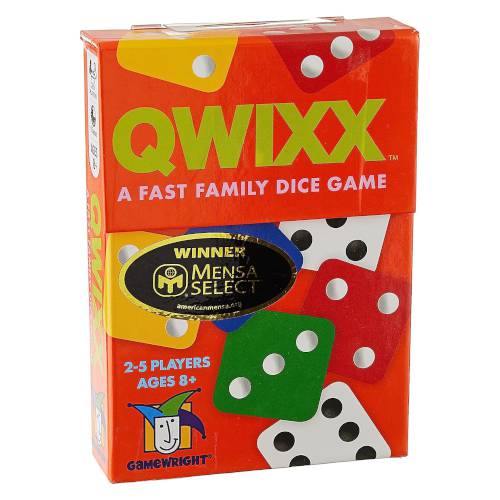
Qwixx is what's known as a "roll and write" game: you roll dice, then use the results to write on your score pad.
In Qwixx, you're trying to fill out blocks 2 to 12 for each of four colors. The thing is, once you fill in a block, you can no longer fill any blocks to the left of that block for that particular color.
Once a player has five blocks filled in a color, they can choose to lock that color (no one else can fill that color anymore). Once two colors are locked, the game ends. The more blocks you've filled, the more points!
Ultimately, this game is a balancing act between smart decisions and pushing your luck. Qwixx packs a ton of fun into such a small box, and it's so easy to play anywhere—even on a plane.
4. Love Letter
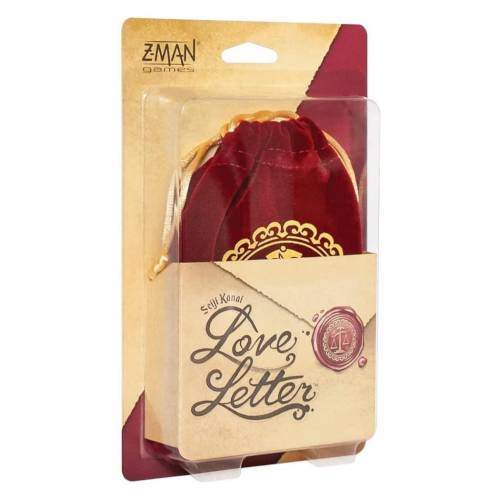
Love Letter is one of the best portable card games of all time. It consists of a deck of 16 cards numbered from 1 to 8, with higher-value cards rarer than the lower-value cards.
This is a game of deduction and hand management. Each player starts with 1 card and the entire game is played like so: draw a card, play a card. The winner is whoever has the highest-value card in hand at the end.
But here's the twist: each card also has a special ability that triggers when played. One lets you peek at another's hand, another lets you trade hands, another lets you name a player and a card—if they're holding that card, they get eliminated from the round.
A round of Love Letter plays in just a few minutes, and whoever is first to win a predetermined number of rounds wins the game.
3. Fantasy Realms
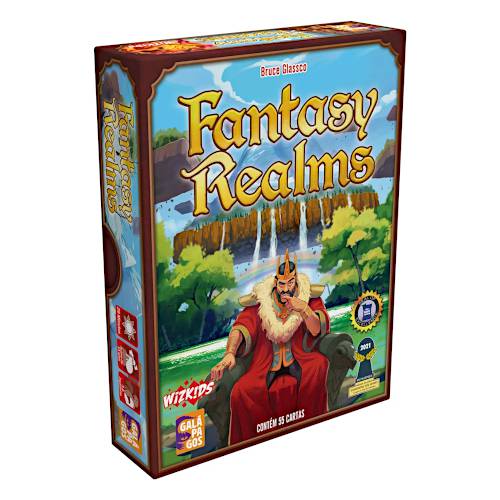
Fantasy Realms is my ultimate choice for portable card game. It's easy to learn and compact in size, with tons of gameplay packed in.
The game consists of a deck of 53 cards: 10 suits of 5 cards each, plus 3 wild cards. Each card has a base point value as well as a scoring mechanism that grants extra points (or loses points) depending on what other cards you have in your hand.
Players start with a hand of 7 cards, then turns are as a simple as drawing a card and discarding a card. Your hand at the end of the game determines your score and highest score wins.
Fantasy Realms can be taken anywhere and plays quickly. Every game is different as you try to figure out the best way to manage your own hand, and you can kill so much time without getting bored.
Note: Scoring can be unwieldy in Fantasy Realms, but the scoring companion app makes it much easier—just pick the cards in your hand and it'll spit out your score.
2. Palm Island
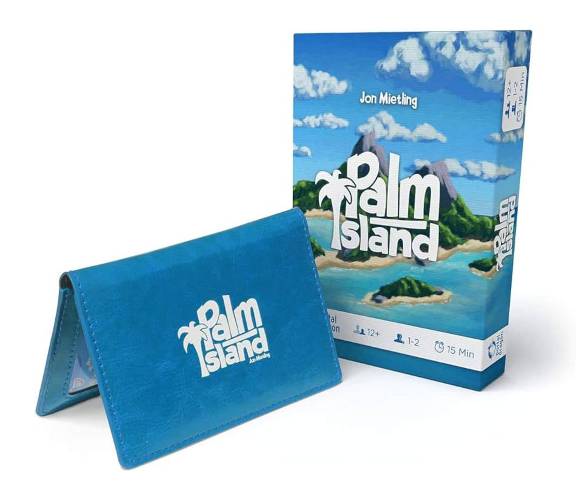
There's one thing about Palm Island that makes it so perfect as a travel card game: it can play entirely in the palm of your hand. You don't even need a table or a lap! No other game is this portable.
Palm Island consists of 17 double-sided cards, with each side split into top and bottom halves. You'll go through the deck several times, tapping cards into resources then spending resources to upgrade cards (i.e. rotating and flipping them to their better actions).
It's a simple but thinky solo game that's played in a beat-your-own-score manner, so there's plenty of replayability.
But the key feature of Palm Island truly is its portability. Hand-only games are exceedingly rare and very few of them are worth playing long-term. Palm Island is the best of its kind.
1. Dungeons, Dice & Danger
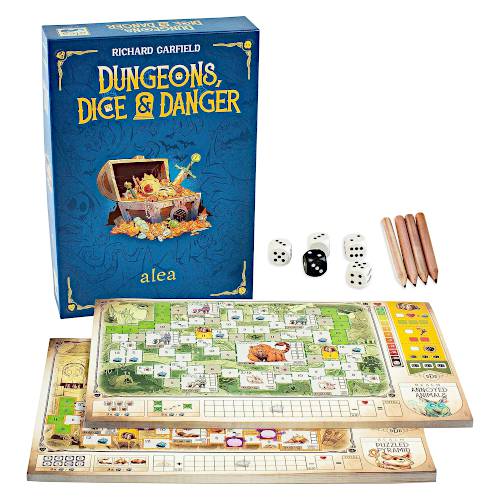
Dungeons, Dice & Danger is the meatiest experience you'll find for a game that's nothing more than a sheet of paper, a pencil, and five dice. You can really play it anywhere and lose yourself in it.
On your turn, you roll the four white dice and split the results into two pairs. Then, everyone uses those two pairs to mark off rooms on their personal dungeon sheet. (The active roller can also use the fifth black die to substitute one of the whites, but no one else can.)
You can only mark rooms that are adjacent to rooms you've already visited, and if you have no rooms to mark on a turn, you lose health which will reduce your score at the end.
You'll also be finding gems, looting treasure, unlocking special actions, and fighting monsters for more ways to earn points.
It's both surprising and impressive to get this much game out of just five dice. If you're going to be traveling a lot—especially on planes—I highly recommend Dungeons, Dice & Danger above all else.
